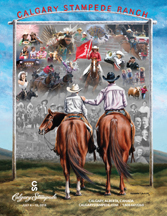- News Front Page
- Uncategorized
- Headline News
- Filipino Calgarian
- Business
- Pinoy Stories
- Community News
- Publisher's Note
- The Main Ingredient
- Views and Opinions
- Maikling Kwento
- Alberta News
- OFW – Month
- Travel News
- Health and Lifestyle
- Pinoy Toons
- Pinoy Spirit
- Entertainment
- The Philippine Lawyer
- Horoscope
- Greetings
- About Us
- Greetings From the Prime Minister
- Greetings from the President of the Philippines
- Greetings from the Premier of Alberta
- Greetings from the Mayor of Calgary
- Advertise With Us
- Disclaimer
- Subscription
Publisher's Note
- Publisher’s Note
 It was 22 years ago when I arrived in Canada and chose Calgary, Alberta to be my home. Leaving my family and friends behind, it was a new adventure for me to be in a new country without knowing anyone. That was the time I looked for a Filipino community paper and never found any, [...]
It was 22 years ago when I arrived in Canada and chose Calgary, Alberta to be my home. Leaving my family and friends behind, it was a new adventure for me to be in a new country without knowing anyone. That was the time I looked for a Filipino community paper and never found any, [...]
Visitors to Pinoytimes
Page added on December 30, 2012
FOOD FACTS “DID YOU KNOW..”
Sugar
- 12 oz (355 mL can) of soda pop has 9.5 teaspoons of sugar
- Candy (6 starburst, 20 jellybeans, 32 gumdrops, 24 junior mints, hard candy), 2 oz has 12.5 teaspoons of sugar.
- Each teaspoon of sugar provides ~17 empty calories. (Thus 1 can of pop provides ~150 empty kcal).
Fat
- A McDonald’s Big Mac has 574 kcal, 32 g fat while a warm chicken oriental salad with light sesame dressing has 335 kcal, 6.6g fat (79% less fat)
- A McDonald’s medium fries has 354 kcal, 17 g fat while a side garden salad with light ranch dressing has 86 kcal and 4.7 g fat (72% less fat)
- You would need to eat 29 bowls of bran flakes (30 g portion) with skim milk to equal the amount of fat in 1 McDonald’s Sausage Egg McMuffin
- You would need to eat 100 baked potatoes to equal the amount of fat in 1-oz (30g) of potato chips. Most chip bags are much bigger than 30g.
Fibre
- Recommended amount of fibre for children and adolescents ages 3-18 years is age plus 5= grams of fibre per day
- Amount of fibre in 1 slice of whole wheat bread is 2.0g, amount in 1 slice of white bread is 0.6g.
- Amount of fibre in 1 apple is 2.6 g, amount in 1 cup of apple juice is 0.3g.
- Amount of fibre in 1 pouch of instant oatmeal is 2.6g, 1 cup of rice krispies is 0.3 g and 1 cup of corn flakes is 0.7g, ¾ cup of raisin bran is 4.7g
Calcium
- You would need to eat 4 Dairymilk chocolate bars to get the amount of calcium in 1 cup of milk. But 4 milk chocolate bars gives 904 kcal and 54 g fat while 1 cup of skim milk provides 86 kcal and 0.4g fat.
- Dietary Reference Intakes (DRIs) recommend children ages 4-8years get 800mg of calcium every day and 9-18 years 1300 mg.
- 1 cup of milk has ~315mg calcium, ¾ cup (175g) of fruit-bottom yogurt has ~280mg, 1 cup of soup made with milk ~190mg, ½ cup broccoli ~50 mg.
Fruit & Veggies
- Did you know 7 out of 10 children and half of adults do not eat the recommended daily minimum of 5 servings of fruits/veggies, as shown in a recent Canadian study?
- Fruits and vegetables are all good regardless if they are fresh, frozen or canned (if selecting canned fruit try to pick ones that are in their own juice instead of in syrup). They are picked at their peak so they are all packed with nutrients.
- Not only we get the vitamins & minerals we need from fruit& veggies, but also vitamins like A & C promote healthy gums, teeth, bones, and give skin a healthy glow. Also fruit/veggies are also a good source of fibre & energy. They have antioxidant properties which help reduce the risk of cancer.
Nutrient info source: Nutrient Value of Some Common Foods. Health Canada, 1999.
Energy Drinks and Sports Drinks: Are they Different?
Hydration is an important part of keeping your body healthy, especially during/after physical activity. Both sports drinks and energy drinks are promoted to be good sources of fluid, however, they are different. So when should you use them?
| Sports Drinks | Energy Drinks | |
| Examples | Gatorade®, Powerade® | Red Bull®, Rockstar® |
| Main Ingredients | Water, sugar, sodium, potassium | Water, sugar, caffeine, medicinal herbs, amino acids |
| Claim | Replace fluids & electrolytes (sodium, potassium) lost during exercise | Stimulate the body, feel alert, energized |
Sports drinks are useful if an athlete is active for more than an hour and are not recommended for school aged children.
Energy drinks are never recommended for school aged children. Here’s a list of reasons why:
- Caffeine dehydrates the body, and too much can cause sleep problems, headaches, nausea/vomiting, fast/irregular heartbeat, high blood pressure and anxiety.
- The ingredients in energy drinks have not been proven safe when mixed together, so there may be side-effects/risks.
- Mixing energy drinks with alcohol is very dangerous. The body becomes even more dehydrated, and the risk of alcohol poisoning increases.
Remember: The best drink for replacing your fluids is Water!
For more information, refer to the School Nutrition Handbook for more information on school nutrition: (http:/www.calgaryhealthregion.ca/nutrition)
Source: Nutrition and Active Living, Alberta health services – Calgary Health Region.
To speak to a health professional, contact your family doctor or speak to a registered nurse 24 hours a day, seven days a week by calling: Calgary Health Link at 403-943-LINK (5465) or toll free at 1-866-408-LINK (5465). Mandarin Health Link 403-943-1554, Cantonese Health Link 403-943-1556.
If you want to read any of the previous ‘Road to Healthy Living’ series articles, please go to
http://www.albertahealthservices.ca/4248.asp and get health information in your own language
RELATED STORIES
LATEST HEADLINES
- ISKWELAHANG PILIPINO (IP) RONDALLA OF BOSTON WINS THE HEARTS OF CALGARIANS
- Pinay doctor joins Medicus Family Clinic and Pharmacy
- Multicultural Ethnic Media round table with Minister of Finance Joe Ceci together with Minister of Social Services Irfan Sabir
- Trans Mountain Pipeline keeps Canada working
- Facilitating travel to Canada while keeping Canadians safe
COMMUNITY NEWS
 A new way forward for some immigration application processing times
A new way forward for some immigration application processing times Calgary Stampede 2018 Poster
Calgary Stampede 2018 Poster Alberta celebrates first Philippine Heritage Month
Alberta celebrates first Philippine Heritage Month UPAAA Welcomes New Philippine Consul General
UPAAA Welcomes New Philippine Consul GeneralPINOY STORIES
 Duterte signs National ID System Act
Duterte signs National ID System Act- Holy Week practices in the Philippines
PINOY SPIRIT
HAVE YOUR SAY
Lorem ipsum dolor sit amet, consectetur adipiscing elit, dolor sit ipsum.PROMOTIONAL BLOCK
Lorem ipsum dolor sit amet, consectetur adipiscing elit, dolor sit ipsum.TRAVEL NEWS
PINOY TOONS
Tags
Archives

















